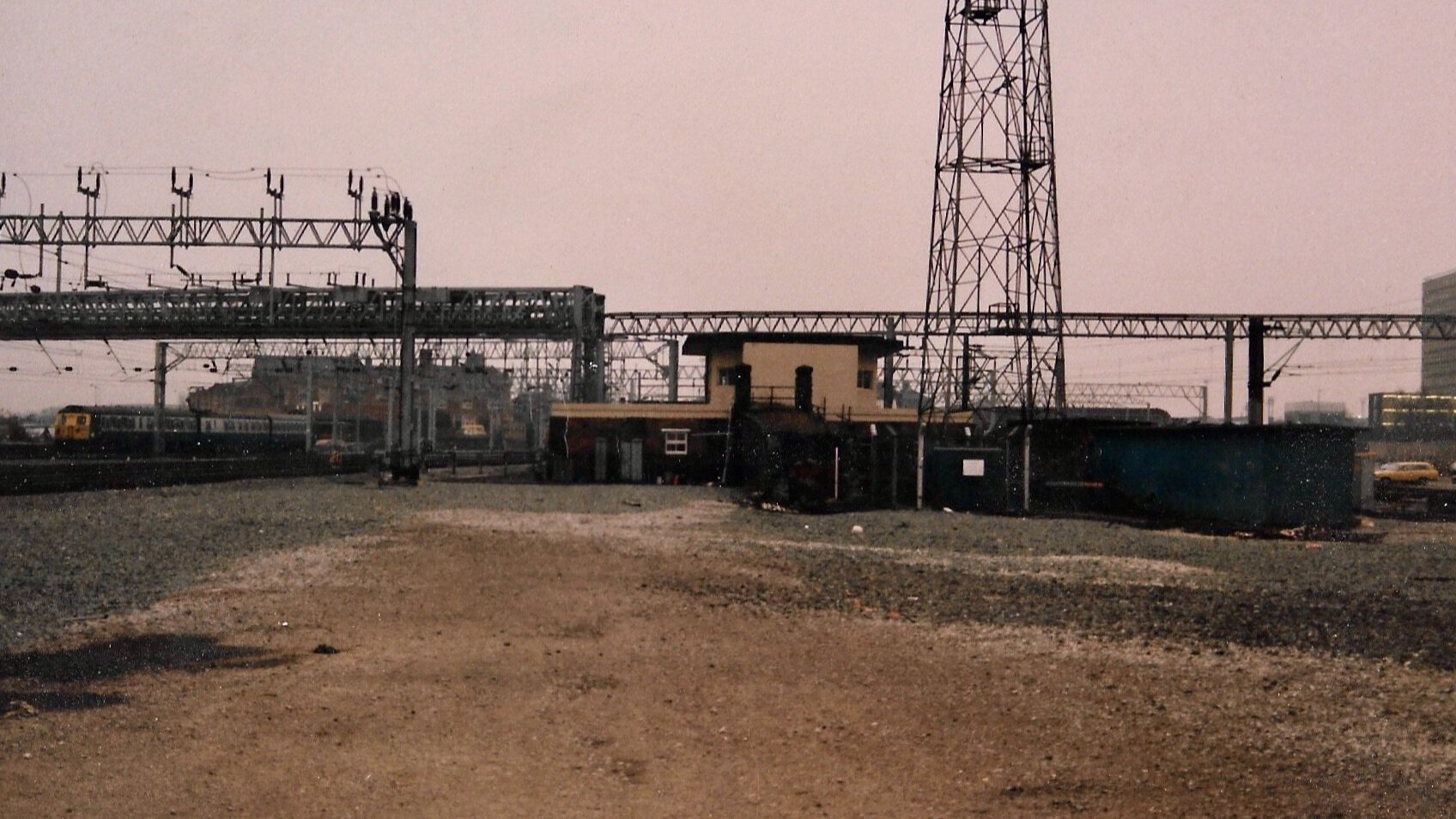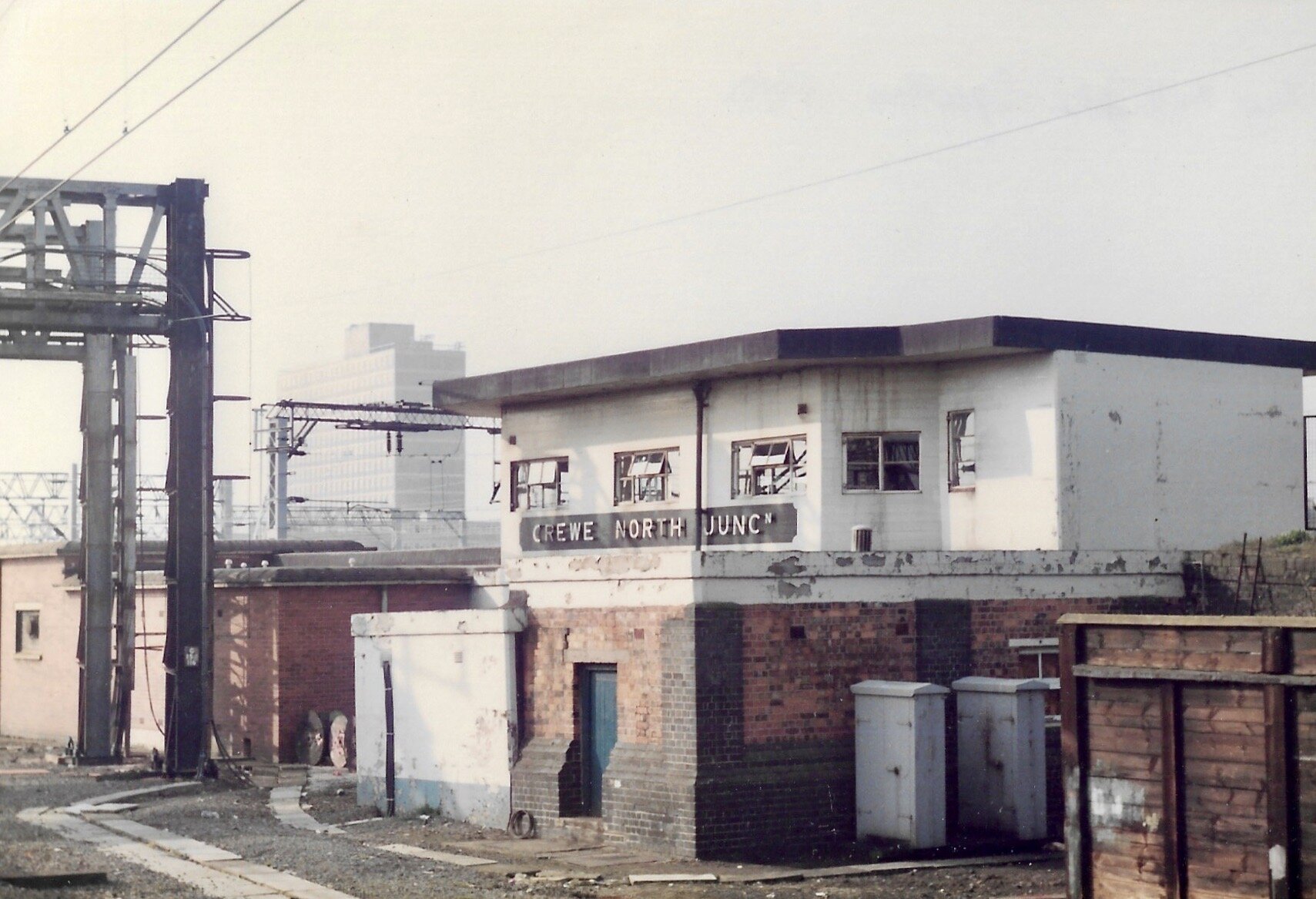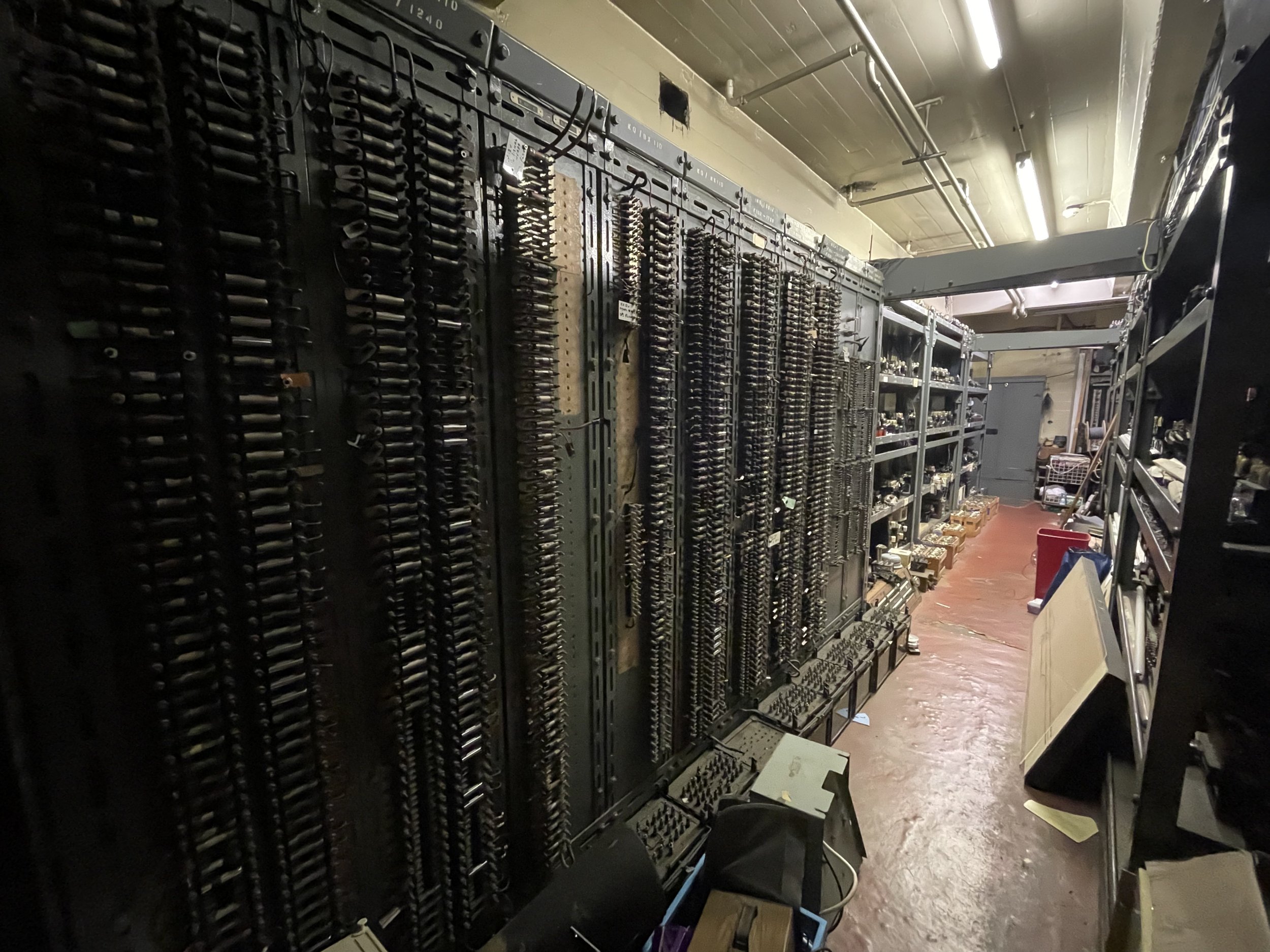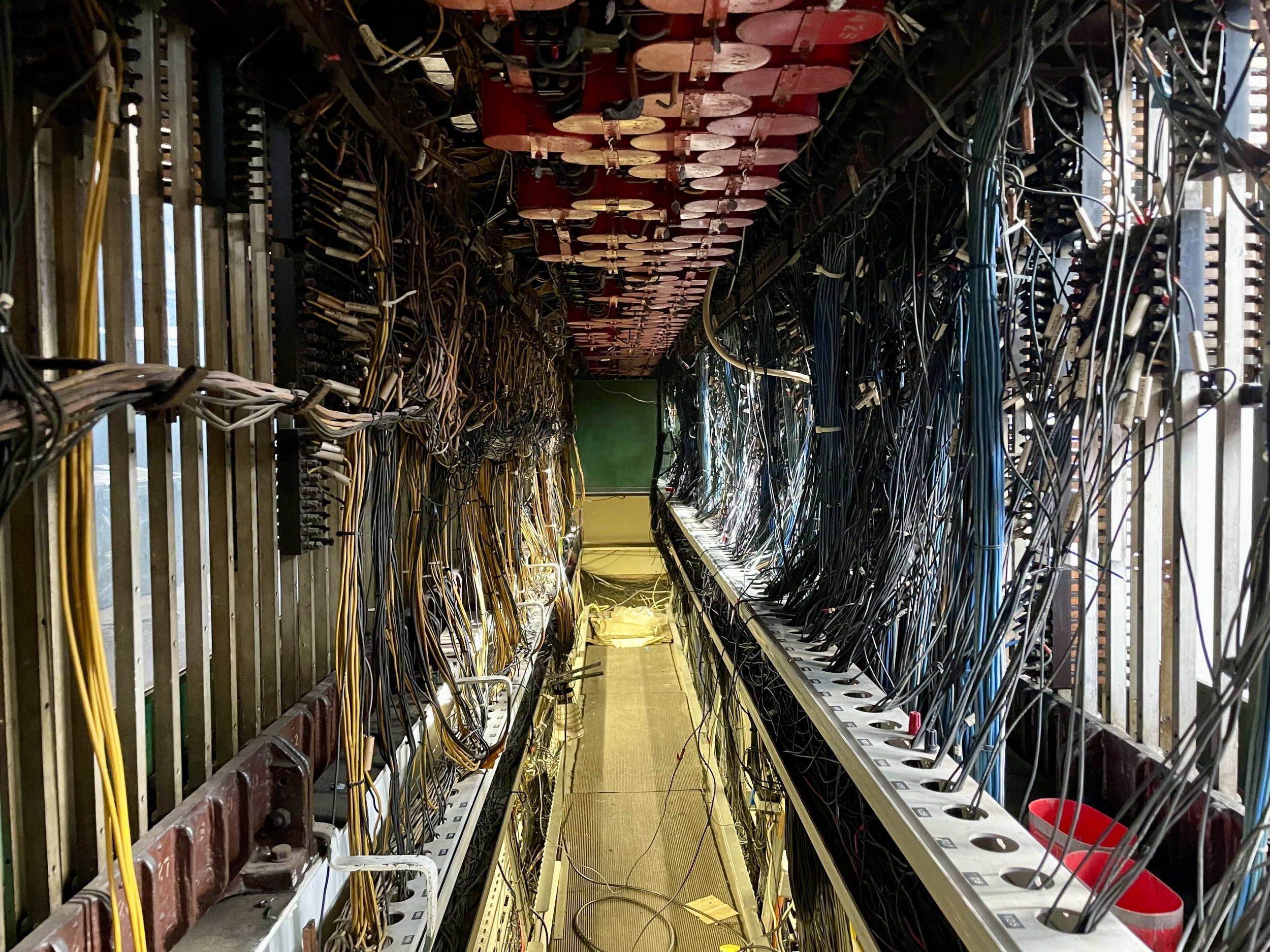
Virtual Museum
Please note that the North Junction Signal Box is currently closed to visitors.
Crewe North Junction Signal Box
The Signal Box at the Heritage Centre today is in fact the fifth generation of Signal Box to control Crewe North Junction, commissioned at the same time as Crewe South Junction Signal Box in response to the increased threat of war in Western Europe.
Constructed in 1938 by the London Midland & Scottish Railway Company and built to an ‘ARP’ (Air Raid Precautions) design, with 38cm thick reinforced concrete walls and a 45cm thick concrete roof. The new ‘electric’ Signal Box was constructed directly in front of the previous 1906 building; this was partially demolished in 1940 with only the ground floor being retained and converted into a Linesmans’ hut. This area is now home to the Heritage Centre’s café and gift shop.
1940 | The new and old signal box side by side. (CHC2021-014)
1984 | A view inside the Signal Box in May of 1984 (CHC2021-015)
When AC electrification was introduced in 1959 additional apparatus was required to immunise the signalling system. Two brick equipment rooms were built in front of the Signal Box to house the extra equipment.
In 1985 as part of the Crewe Station remodelling project this Signal Box was closed with control being handed over to the new Signalling Centre on the opposite side of the Crewe to Chester Line. In 1987 the Signal Box was converted into a museum as part of the new Heritage Centre.
1982 | North Junction Signal Box seen from the West Coast Mainline on Saturday 3rd April 1982. (CHC2020-020)
1987 | A view of the Signal Box from the end of the Spider Bridge prior to work on the Heritage Centre beginning
The Relay Room
This room houses all the various relays needed to safely operate the Signal Box, the functions of these include the interlocking of the levers found upstairs, outside point movements and the signal aspects changes.
Indicators recorded the satisfactory performance of outside apparatus which were then transferred back via certain relays. Other relays were able to determine whether individual sections of track were occupied or clear. In all approximately 750 relays were installed in this room.
The system was designed with safety as the predominant factor. Thousands of metres of wiring was used and individually labelled as to its use. Fuse and link racks were used to protect equipment and to disconnect it when it wasn’t required.
There were four main voltages used to operate the equipment in this Signal Box which were 650v, 110v, 24v, and 10v, all power was fed from the Power Supply Room which is now the museum’s audio-visual room.
This apparatus and all outside functions were maintained 24 hours a day by three teams of skilled technicians.






